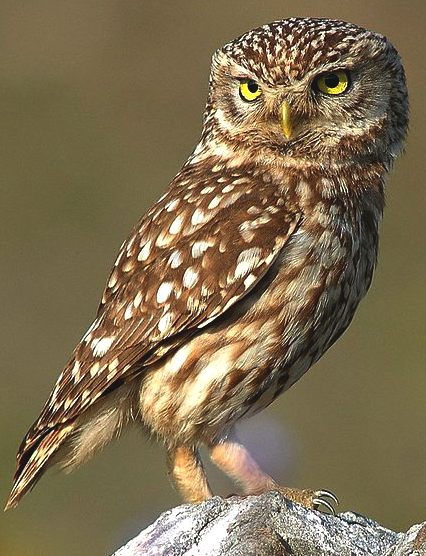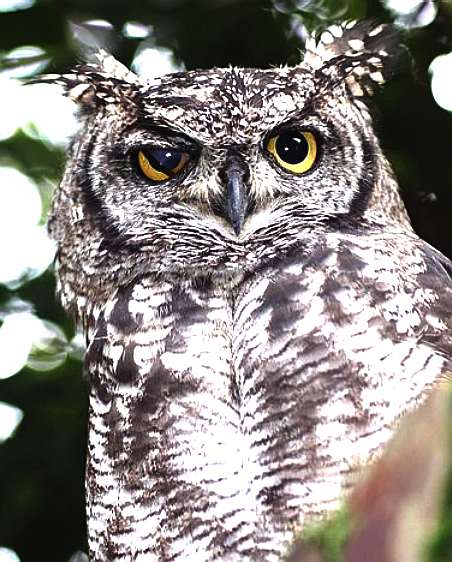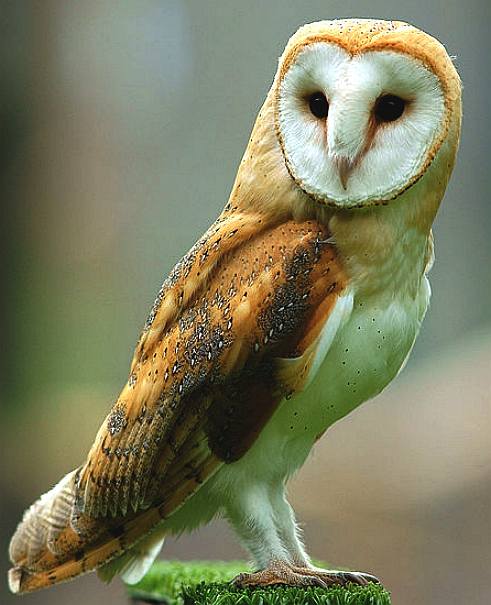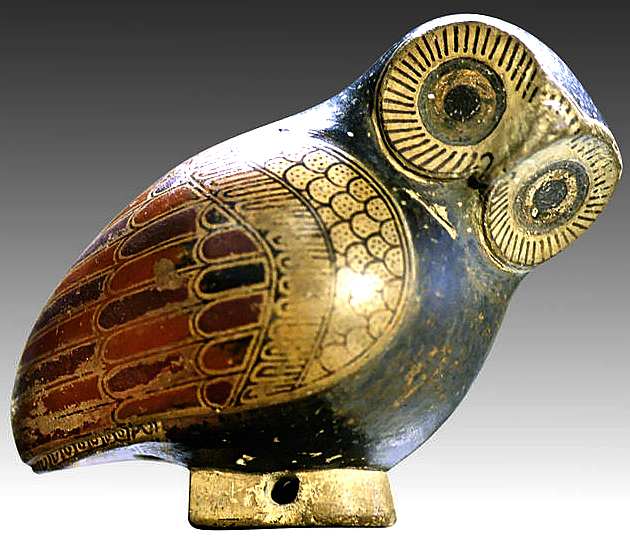OWLS
My wife (now ex) announced one day that she wanted to keep a couple of barn owls. Well, they are cute, so, without giving it too much thought, I agreed, with all the usual provisos that you can be sure will go out the window with time. We already had a dog and two chinchillas. It occurred to me that our house was becoming a menagerie, with animal pooh various, adding a new olfactory dimension. Regardless, I constructed an aviary of magnificent proportions at the bottom of our garden in suburban Polegate. Then came the revelation that they had to be fed dead mice and chicks. These were supplied in large bags frozen from a local specialist, and in our fridge they went. Much as I loved these beautiful animals (including the wife at the time), I can't tell you what a put off it is when contemplating breakfast, seeing a dead chick or mouse thawing out on the drainer.
I prefer to see owls in their natural habitat. In the cold, clear winter evenings, I communicate with the local population, exchanging hoot calls, which I now have down to a 'T'. If you try this for yourself, you'll find that on those crisp nights with a full moon, your voice caries best. The owls will call back. I think mistakenly looking for a mate. I've had some quite complicated conversations. For this reason, I don't do this much now. Poor frustrated owls. NK

Owls are a group of birds that belong to the order Strigiformes, constituting 200 extant bird of prey species. Most are solitary and nocturnal, with some exceptions (e.g., the Northern Hawk Owl). Owls hunt mostly small mammals, insects, and other birds, although a few species specialize in hunting fish. They are found in all regions of the Earth except
Antarctica, most of Greenland and some remote islands. Though owls are typically solitary, the literary collective noun for a group of owls is a parliament. Owls are characterized by their small beaks and wide faces, and are divided into two families: the typical owls, Strigidae; and the barn-owls,
Tytonidae.
Anatomy
Owls have large forward-facing eyes and ear-holes; a hawk-like beak; a flat face; and usually a conspicuous circle of feathers, a facial disc, around each eye. The feathers making up this disc can be adjusted in order to sharply focus sounds that come from varying distances onto the owls' asymmetrically placed ear cavities. Most birds of prey sport eyes on the sides of their heads, but the stereoscopic nature of the owl's forward-facing eyes permits the greater sense of depth perception necessary for low-light hunting. Although owls have binocular vision, their large eyes are fixed in their sockets—as are those of other birds—so they must turn their entire head to change views. Owls can rotate their heads and necks as much as 270 degrees in either
direction. As owls are farsighted, they are unable to see clearly anything within a few centimeters of their eyes. Caught prey can be felt by owls with the use of filoplumes—like feathers on the beak and feet that act as "feelers". Their far vision, particularly in low light, is exceptionally good.
The smallest owl—weighing as little as 31 grams (1 oz) and measuring some 13.5 centimetres (5 in)—is the Elf Owl
(Micrathene whitneyi). Around the same diminutive length, although slightly heavier, are the lesser known Long-whiskered Owlet (Xenoglaux loweryi) and Tamaulipas Pygmy Owl
(Glaucidium sanchezi).
The largest owl by length is the Great Grey Owl (Strix nebulosa), which measures around 70 cm (28 in) on average and can attain a length of 84 cm (33 in). However, the heaviest (and largest winged) owls are two similarly-sized eagle owls; the Eurasian Eagle-Owl (Bubo bubo) and Blakiston's Fish Owl (B. blakistoni). These two species, which are on average about 2.53 cm (1.00 in) shorter in length than the Great Grey, can both attain a wingspan of 2 m (6.6 ft) and a weight of 4.5 kg (10 lb) in the largest females.
Different species of owls make different sounds; this wide range of calls aids owls in finding mates or announcing their presence to potential competitors, and also aids ornithologists and birders in locating these birds and recognizing species. As noted above, the facial disc helps owls to funnel the sound of prey to their ears. In many species, these discs are placed asymmetrically, for better directional
location.
The plumage of owls is generally cryptic, but many species have facial and head markings, including face masks, ear tufts and brightly coloured irises. These markings are generally more common in species inhabiting open habitats, and are thought to be used in signaling with other owls in low light
conditions.
Owl eggs usually have a white color and an almost spherical shape, and range in number from a few to a dozen, depending on species. Eggs are laid at intervals of 1 to 3 days and do not hatch at the same time. This fact accounts for the wide variation in the size of sibling nestlings. Owls do not construct nests, but rather look for a sheltered nesting site or an abandoned nest in trees, underground burrows, or in buildings, barns and caves to raise their
young.

Behavior
Most owls are nocturnal, actively hunting their prey only in darkness. Several types of owl, however, are crepuscular—active during the twilight hours of dawn and dusk; one example is the Pygmy owl (Glaucidium). A few owls are active during the day also; examples are the Burrowing Owl (Speotyto cunicularia) and the Short-eared Owl
(Asio flammeus).
Much of the owls' hunting strategy depends on stealth and surprise. Owls have at least two adaptations that aid them in achieving stealth. First, the dull coloration of their' feathers can render them almost invisible under certain conditions. Secondly, serrated edges on the leading edge of owls' remiges muffle an owl's wing beats, allowing an owl's flight to be practically silent. Some fish-eating owls, for which silence has no evolutionary advantage, lack this adaptation.
An owl's sharp beak and powerful talons allow it to kill its prey before swallowing it whole (if it is not too big). Scientists studying the diets of owls are helped by their habit of regurgitating the indigestible parts of their prey (such as bones, scales and fur) in the form of pellets. These "owl pellets" are plentiful and easy to interpret, and are often sold by companies to schools for dissection by students as a lesson in biology and
ecology.
Adaptations for hunting
All owls are carnivorous birds of prey and live mainly on a diet of insects and small rodents such as mice, rats and hares. Some owls are also specifically adapted to hunt fish. They are very adept in hunting in their respective environments. Since owls can be found in nearly all parts of the world and across a multitude of ecosystems, their hunting skills and characteristics vary slightly from species to species, though most characteristics are shared among all species.
Flight and feathers
Most owls share an innate ability to fly almost silently and also more slowly in comparison to other birds of prey. Most owls live a mainly nocturnal lifestyle and being able to fly without making any noise gives them a strong advantage over their prey that are listening for any sign of noise in the dark night. A silent, slow flight is not as necessary for diurnal and crepuscular owls given that prey can usually see an owl approaching. While the morphological and biological mechanisms of this silent flight are more or less unknown, the structure of the feather has been heavily studied and accredited to a large portion of why they have this ability. Owls’ feathers are generally larger than the average birds’ feathers, have fewer radiates, longer pennulum, and achieve smooth edges with different rachis
structures. Serrated edges along the owl’s remiges bring the flapping of the wing down to a nearly silent mechanism. Research has shown that the serrations are more likely reducing aerodynamic disturbances, rather than simply reducing
noise. The surface of the flight feathers are covered with a velvety structure which absorbs the sound of the wing moving. These unique structures reduce noise frequencies above 2
kHz, making the sound level emitted drop below the typical hearing spectrum of the owl’s usual
prey. and also within the owl’s own best hearing range. This optimizes the owl’s ability to silently fly in order to capture prey without the prey hearing the owl first as it flies in. It also allows the owl to monitor the sound output from its flight pattern.

Vision
Another characteristic of the owl which aids in their nocturnal prey capture is their eyesight. Owls are part of a small group of birds that live nocturnally, but do not use echolocation to guide them in flight in low-light situations. Owls are known for their disproportionally large eyes in comparison to their skull. An apparent consequence of the evolution of an absolutely large eye in a relatively small skull is that the eye of the owl has become tubular in
shape. This shape is found in other so-called nocturnal eyes, such as the eyes of prosimians and bathypelagic
fishes. Since the eyes are fixed into these sclerotic tubes, they are unable to move the eyes in any
direction. Instead of moving their eyes, owls swivel their head to visualize their surroundings. The swiveling radius of the owl’s head is around 270°, easily enabling them to see behind them without relocating the
torso. This ability keeps bodily movement at a minimum and thus reduces the amount of sound the owl makes as it waits for its prey.
Owls are regarded as having the most frontally placed eyes amongst all avian groups, which gives them some of the largest binocular fields of vision. But owls are farsighted and cannot focus on objects within a few centimeters of their eyes. While it is commonly believed that owls have such great nocturnal vision due to their large (and thus very light-gathering) eyes and pupils and/or extremely sensitive rod receptors, the true cause for their ability to see in the night is due to neural mechanisms which mediate the extraction of spatial information gathered from the retinal image throughout the nocturnal luminance range. These mechanisms are only able to function due to the large sized retinal image. Thus, the primary nocturnal function in the vision of the owl is due to its large posterior nodal distance; retinal image brightness is only maximized to the owl within secondary neural functions. These attributes of the owl cause the nocturnal eyesight to be far superior to that of its average prey.
Hearing
Owls exhibit specialized hearing functions and ear shapes that also aid in hunting. They are noted for asymmetrical ear placements on the skull in some genera. Owls can have either internal or external ears, but those genera exhibiting asymmetrical ear geometry only have external ear placements. Asymmetry has not been reported to extend to the middle or internal ear of the owl. Asymmetrical ear placement on the skull allows the owl to pinpoint the location of its prey. This is especially true for strictly nocturnal species such as the barn owls 'Tyto' or Tengmalm’s
Owl. With ears set at different places on its skull, an owl is able to determine the direction from which the sound is coming by the minute difference in time that it takes for the sound waves to penetrate the left and right
ears.
The owl turns its head until the sound reaches both ears at which point it is directly facing the source of the sound. This time difference between ears is a matter of about 0.00003 seconds, or 30 millionths of a second. In coordination with this left to right calibration, some owls (like the barn owl) have slight up and down asymmetricality of the ears, which allows the owl to recognize whether a sound originates higher or lower in vertical space by the volume of the sound in each ear. If the sound is louder in the ear facing upwards, then the prey is higher up than the owl’s focus. Like the eyes, which utilize feather movements to focus light, the ears are surrounded by feathers to maximize hearing capabilities. Behind the ear openings there are modified, dense feathers, densely packed to form a facial ruff, which creates an anteriorly-facing concave wall that cups the sound into the ear structure. This facial ruff is poorly defined in some species and prominent, nearly encircling the face, in other species. The facial disk also acts to direct sound into the ears, and a downward-facing, sharply triangular beak minimizes sound reflection away from the face. The shape of the facial disk is adjustable at will to focus sounds more effectively. Owls have an audible range similar to that of humans, but far more acute in certain frequencies, allowing them to detect even the slightest movements of their prey. Once an owl has determined the location of its prey, it flies towards it according to the last sound perceived. If the prey moves, the owl is able to adjust its flight pattern mid-flight.
Talons
While the auditory and visual capabilities of the owl allow it to locate and pursue its prey, the talons and beak of the owl do the final work. The owl kills its prey by using these talons to crush the skull and knead the
body. The crushing power of an owl’s talons varies according to prey size and type, and by the size of the owl. The Burrowing Owl (Athene cunicularia), a small partly insectivorous owl, has a release pressure of only 500 grams. The larger Barn Owl (Tyto alba) needs pressure of 3000 grams to release its prey, and one of the largest owls, the Great Horned Owl (Bubo virginianus) needs pressure of over 13,000 grams to release prey in its
talons. An owl’s talons, like those of most birds of prey, can seem massive in comparison to the body size outside of flight. The Masked owl has some of the proportionally longest talons of any bird of prey; they appear enormous in comparison to the body when fully extended to grasp
prey. Owls' foot design differs from that of diurnal birds of prey because owls have a zygodactyl toe arrangement, with two toes directed forward and two toes directed backward during
perching.
During flight, the outer front toe swivels forward on a flexible joint so that three of the four toes are facing forward. Some owls’ talons have adapted to include filoplume feathers that aid in sensing the prey once it is close or has in fact made contact with the talon, which is useful in capturing small prey at night. The underside of the talon foot is covered in a rough, knobby surface, which allows the owl to grasp its prey and hold it without having to keep the muscles tightly contracted. An owl’s claws are sharp and curved. The family Tytonidae have inner and central toes of about equal length, while the family Strigidae have an inner toe that is distinctly shorter than the central one. These different morphologies allow efficiency in capturing prey specific to the different environments they inhabit.
Beak
The beak of the owl is short, curved and downward-facing, and typically hooked at the tip for gripping and tearing its prey. Once prey is captured, the scissor motion of the top and lower bill is used to tear the tissue and kill. The sharp lower edge of the upper bill works in coordination with the sharp upper edge of the lower bill to deliver this
motion. The downward-facing beak allows the owl’s field of vision to be clear, as well as to direct sound into the ears without deflecting sound waves away from the face.
Camouflage
The coloration of the owl’s plumage plays a key role in its ability to sit still and blend into the environment, making it nearly invisible to prey. Owls tend to mimic the colorations and sometimes even the texture patterns of their surroundings, the common barn owl being an exception. Nyctea scandiaca, or the Snowy Owl, appears nearly bleach-white in color with a few flecks of black, mimicking their snowy surroundings perfectly. Likewise, the Muted Wood-Owl (Strix ocellata) displays shades of brown, tan and black, making the owl nearly invisible in the surrounding trees, especially from behind. Usually, the only tell-tale sign of a perched owl will be its vocalizations or its vividly colored eyes.
Evolution and
Systematics
The systematic placement of owls is disputed. For example, the Sibley-Ahlquist taxonomy finds that, based on DNA-DNA hybridization, owls are more closely related to the nightjars and their allies (Caprimulgiformes) than to the diurnal predators in the order Falconiformes; consequently, the Caprimulgiformes are placed in the Strigiformes, and the owls in general become a family Strigidae. A recent study indicates that the drastic rearrangement of the genome of the accipitrids may have obscured any close relationship of theirs with groups such as the
owls. In any case, the relationships of the Caprimulgiformes, the owls, the falcons and the accipitrid raptors are not resolved to satisfaction; currently there is an increasing trend to consider each group (with the possible exception of the accipitrids) a distinct order.
There are some 220 to 225 extant species of owls, subdivided into two families: typical owls (Strigidae) and barn-owls (Tytonidae). Some entirely extinct families have also been erected based on fossil remains; these differ much from modern owls in being less specialized or specialized in a very different way (such as the terrestrial Sophiornithidae). The Paleocene genera Berruornis and Ogygoptynx show that owls were already present as a distinct lineage some 60–57 mya (million years ago), and, hence, possibly also some 5 million years earlier, at the extinction of the non-avian dinosaurs. This makes them one of the oldest known groups of non-Galloanserae landbirds. The supposed "Cretaceous owls" Bradycneme and Heptasteornis are apparently non-avialan
maniraptors.
During the Paleogene, the Strigiformes radiated into ecological niches now mostly filled by other groups of
birds. The owls as we know them today, on the other hand, evolved their characteristic morphology and adaptations during that time, too. By the early Neogene, the other lineages had been displaced by other bird orders, leaving only barn-owls and typical owls. The latter at that time were usually a fairly generic type of (probably earless) owl similar to today's North American Spotted Owl or the European Tawny Owl; the diversity in size and ecology found in typical owls today developed only subsequently.
Around the Paleogene-Neogene boundary (some 25 mya), barn-owls were the dominant group of owls in southern Europe and adjacent Asia at least; the distribution of fossil and present-day owl lineages indicates that their decline is contemporary with the evolution of the different major lineages of typical owls, which for the most part seems to have taken place in Eurasia. In the Americas, there was rather an expansion of immigrant lineages of ancestral typical owls.
The supposed fossil herons "Ardea" perplexa (Middle Miocene of Sansan, France) and "Ardea" lignitum (Late Pliocene of Germany) were more probably owls; the latter was apparently close to the modern genus Bubo. Judging from this, the Late Miocene remains from France described as "Ardea" aureliensis should also be
restudied. The Messelasturidae, some of which were initially believed to be basal Strigiformes, are now generally accepted to be diurnal birds of prey showing some convergent evolution towards owls. The taxa often united under
Strigogyps were formerly placed in part with the owls, specifically the Sophiornithidae; they appear to be Ameghinornithidae instead.

Owls - Western Culture and Art
The modern West generally associates owls with wisdom. This link goes back at least as far as Ancient Greece, where Athens, noted for art and scholarship, and Athena, Athens' patron goddess and the goddess of wisdom, had the owl as a symbol. Marija Gimbutas traces veneration of the owl as a goddess, among other birds, to the culture of Old Europe, long pre-dating Indo-European cultures.
T. F. Thiselton-Dyer in his Folk-lore of Shakespeare says that "from the earliest period it has been considered a bird of ill-omen, and Pliny tells us how, on one occasion, even Rome itself underwent a lustration, because one of them strayed into the Capitol. He represents it also as a funereal bird, a monster of the night, the very abomination of human kind. Virgil describes its death-howl from the top of the temple by night, a circumstance introduced as a precursor of Dido's death. Ovid, too, constantly speaks of this bird's presence as an evil omen; and indeed the same notions respecting it may be found among the writings of most of the ancient poets."
A list of "omens drear" in John Keats' Hyperion includes the "gloom-bird's hated
screech."
In France, Belgium and the Netherlands, where owls are divided into eared owls (fr. hiboux / d. oehoes) and earless owls (fr. chouettes/ d. bosuilen), the former are seen as symbols of wisdom while the latter are assigned the grimmer meaning.
Three Canadian provinces have owls as provincial symbols: the Great Horned Owl in Alberta, the Great Grey Owl in Manitoba, and the Snowy Owl in
Quebec.
An original Owl pencil drawing by Martin House
BIRD INDEX:
|
Bishop, Orange Canary Chaffinch Chicken Cormorant Cuckoo Dodo Eagle Falcon Finch Grebe Grouse Hawk Herons House
Martin Ibis,
Sacred Kingfisher |
Kiwi Lilac-Breasted Roller Loon Mynah Nightjar Parrot,
Amazon Partridge Pelican Penguin Petrel Pheasant Quail Robin Seagull Sparrow Starling Stork Swan Swift Turkey Wader Woodcock Woodpecker |
LINKS:
Animal Diversity Web Page: Owls
Owls of the Harry Potter movies - learn about the owls featured in the films
Owl videos on the Internet Bird Collection
San Diego Zoo Birds: Owl". San Diego Zoo
A Parliament of Owls". Colorado Division of Wildlife.
The Owls of Big Bend". National Park Service U.S. Department of the Interior.
Eurasian Eagle Owl - Bubo bubo - Information, Pictures, Sounds
Take A Peek At Boo, The Eagle Owl – The Quillcards Blog
It's sad to think that one day, the planet Earth may be gone. This is despite our best efforts to save her. The good news is that provided we all work together, we can preserve the status quo on our beautiful blue world, for centuries to come. Provided that is we heed the warnings nature is sending us, such as global warming and other pollutions.
Please use the Index below to navigate the Animal Kingdom:-
OTHER
ANIMALS: Such
as frogs (class: Amphibia) ANNELIDS As
in Earthworms (phyla: Annelida) Neanderthals,
Homo Erectus (Extinct) Spiders
(class: Arachnida) Such
as Eagles, Albatross
(class: Aves) CRUSTACEANS such
as crabs (subphyla: Crustacea) Tyranosaurus
Rex,
Brontosaurus (Extinct) ECHINODERMS As
in Starfish (phyla: Echinodermata) Sharks,
Tuna (group: Pisces) HUMANS
-
MAN Homo
Sapiens THE
BRAIN Ants,
(subphyla: Uniramia class: Insecta) Which
includes PLANTS
non- animal life Warm
blooded animals (class: Mammalia) Such
as Kangaroos
(order: Marsupialia) MOLLUSKS Such
as octopus (phyla: Mollusca) Trees
- PRIMATES Gorillas,
Chimpanzees
(order: Primates) As
in Crocodiles,
Snakes (class: Reptilia) such
as Rats, Mice (order: Rodentia) SIMPLE
LIFE FORMS As
in Amoeba, plankton (phyla: protozoa)
A heartwarming adventure: Pirate whalers V Conservationists,
with an environmental message.
This website is Copyright © 1999 & 2025 Electrick Publications & Blueplanet Netdirect Productions.
The bird logos and name Solar Navigator are trademarks. All rights reserved. Max Energy Limited is an educational charity working hard for world peace
